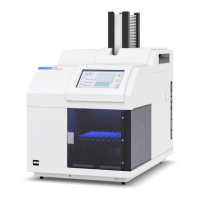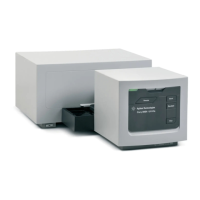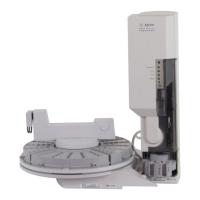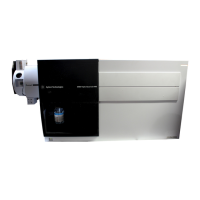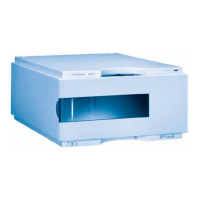15 Inlets
Operation Manual 215
About the Cool On-Column Inlet
This inlet introduces liquid sample directly onto a capillary column. To do this, both the inlet
and the oven must be cool at injection, either at or below the boiling point of the solvent.
Because the sample does not vaporize immediately in the inlet, problems with sample
discrimination and sample alteration are minimized. If done properly, cool-on column injection
also provides accurate and precise results.
You can operate the inlet in track oven mode, where the inlet temperature follows the column
oven, or you can program up to three temperature ramps. A cryogenic cooling option that uses
liquid CO
2
or N
2
from the oven cryogenic system can reach sub-ambient temperatures.
Setup modes of the COC inlet
The COC inlet hardware must be set up for one of three usages, depending on the type of
injection and column size.
• 0.25 mm or 0.32 mm automated on-column. Use predrilled septa.
• 0.53 mm automatic on-column or retention gap
• 0.2 mm manual
Retention gaps
Because the sample is injected directly onto the column, it is strongly suggested that a
retention gap—or guard column—be used to protect your column. A retention gap is a
deactivated column that is connected between the inlet and the analytical column. If you
choose to use one, it is suggested that at least 1 m of retention gap be installed per 1L of
sample injected. Information on ordering retention gaps can be found in the Agilent catalog for
consumables and supplies.

